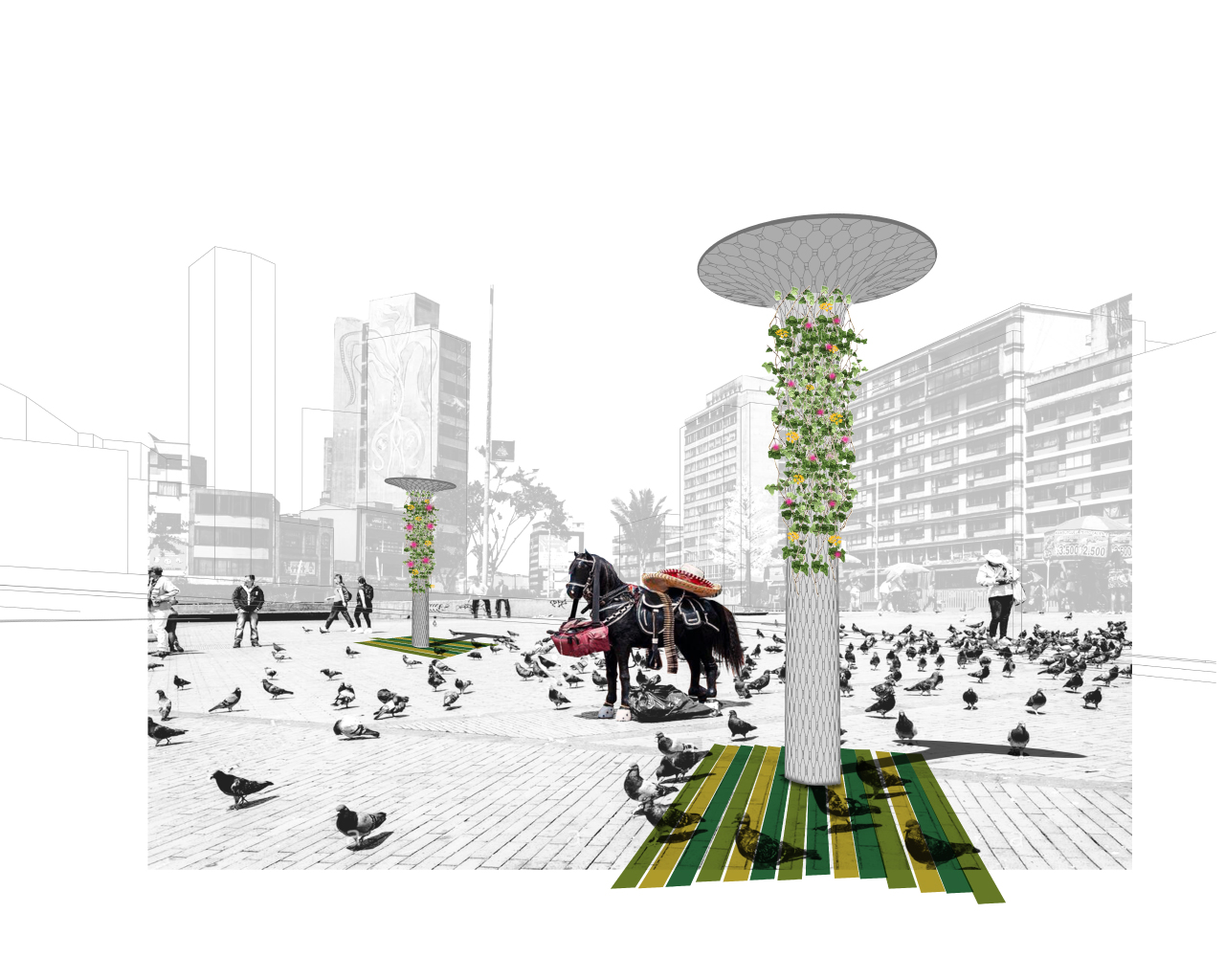The revitalisation of the space occupied by the Plaza de San Victorino through lighting and vegetation compensates for the high density of construction and hard areas of the sector, characterised by being purely commercial, with high population flows of different types.
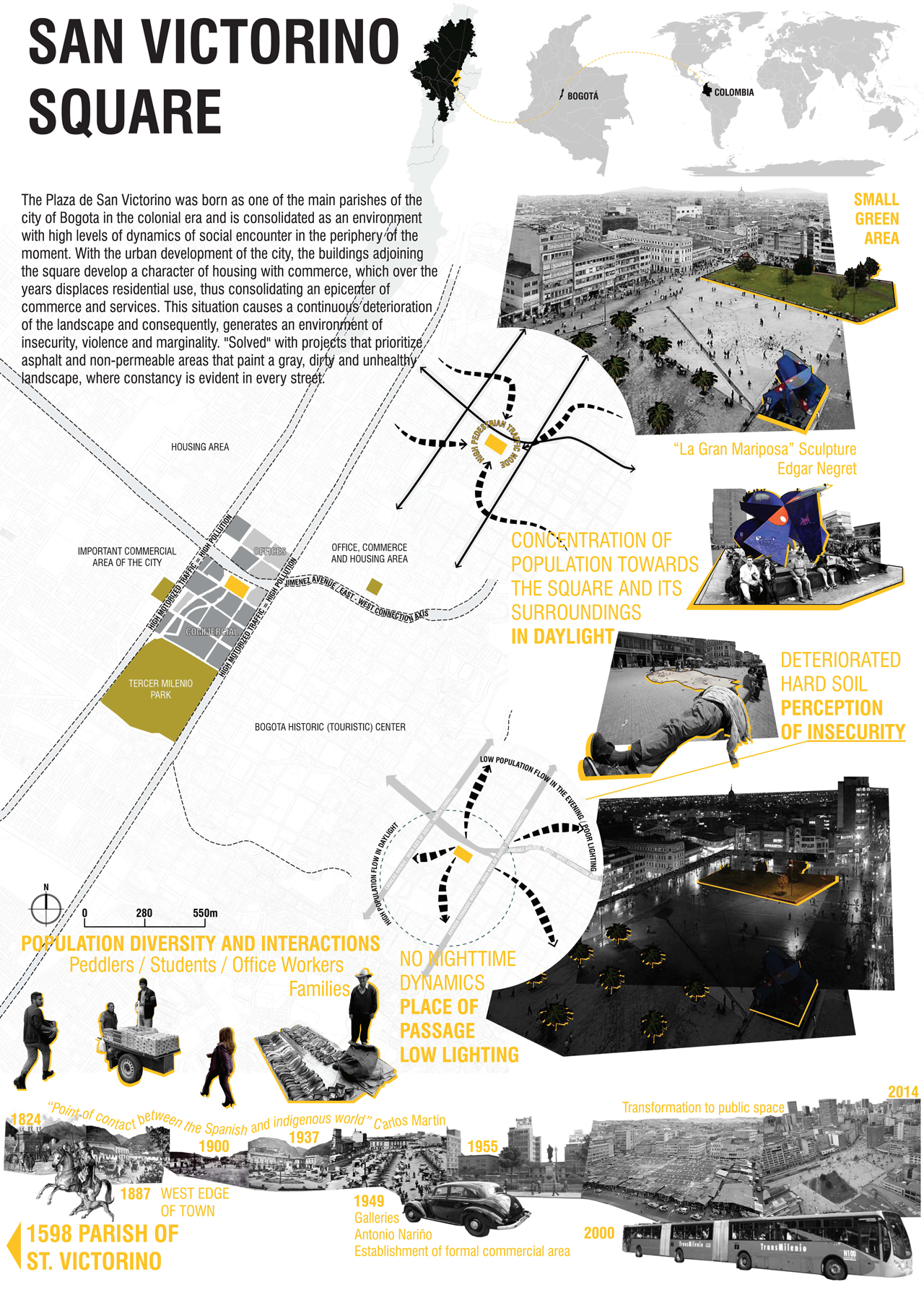
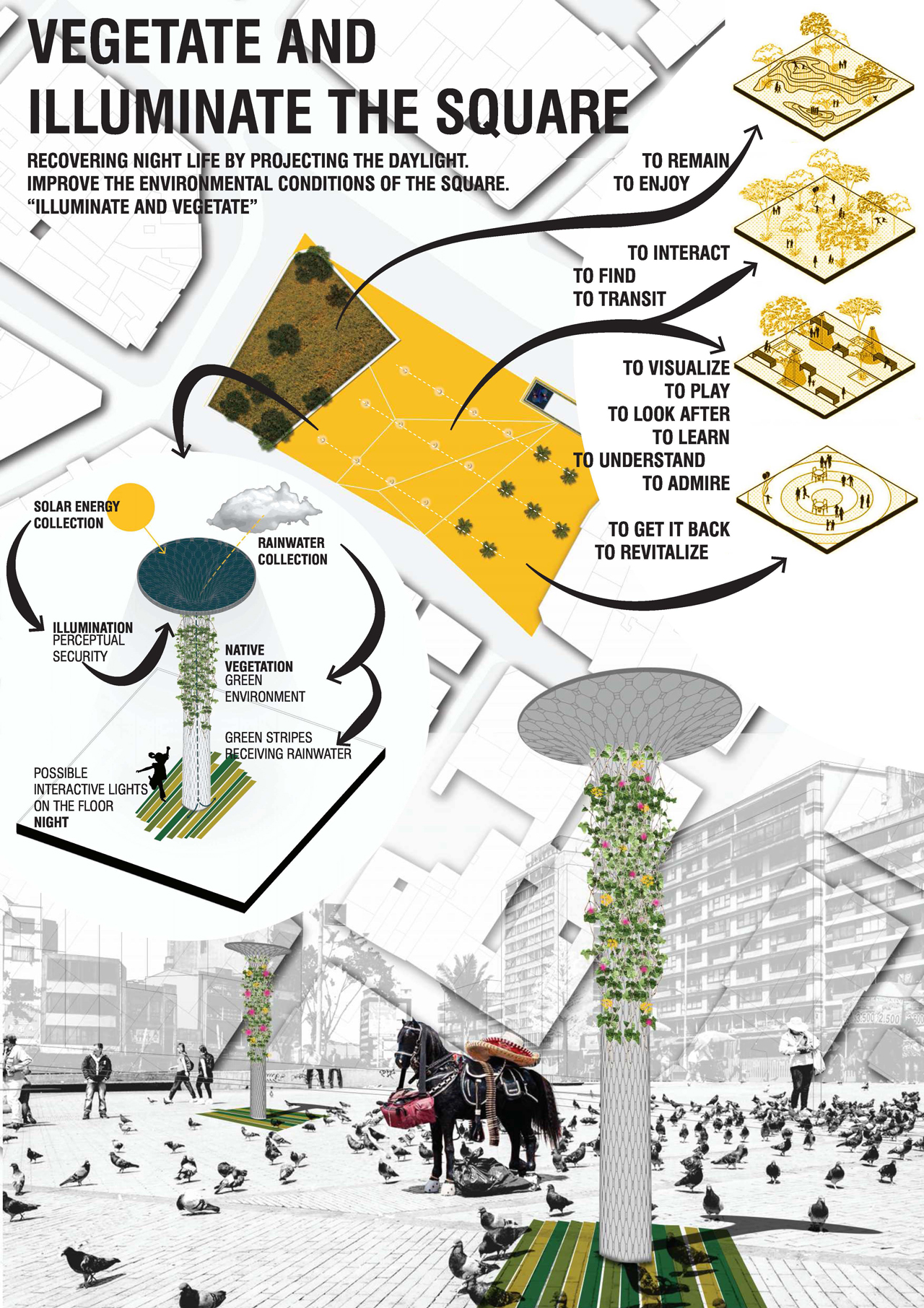
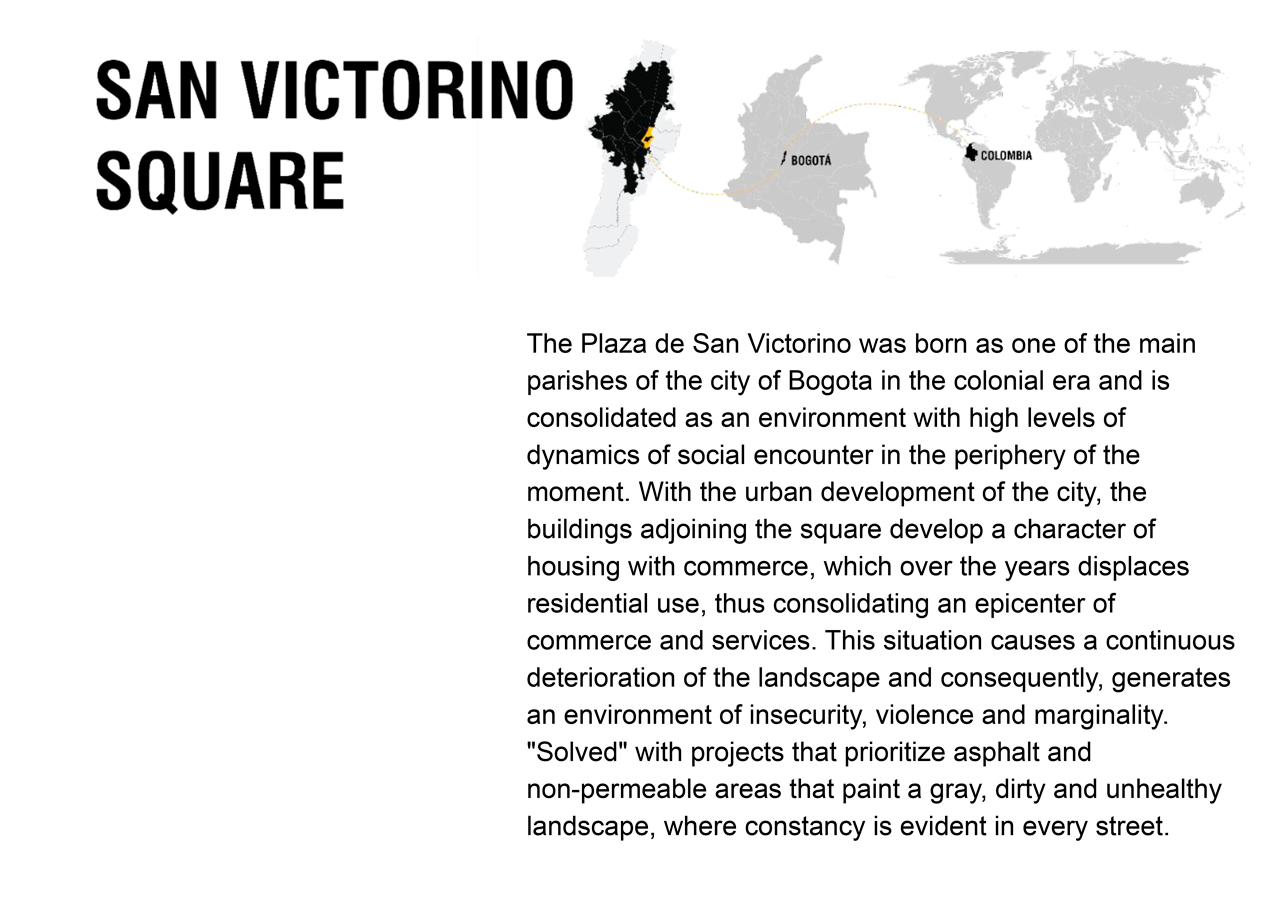
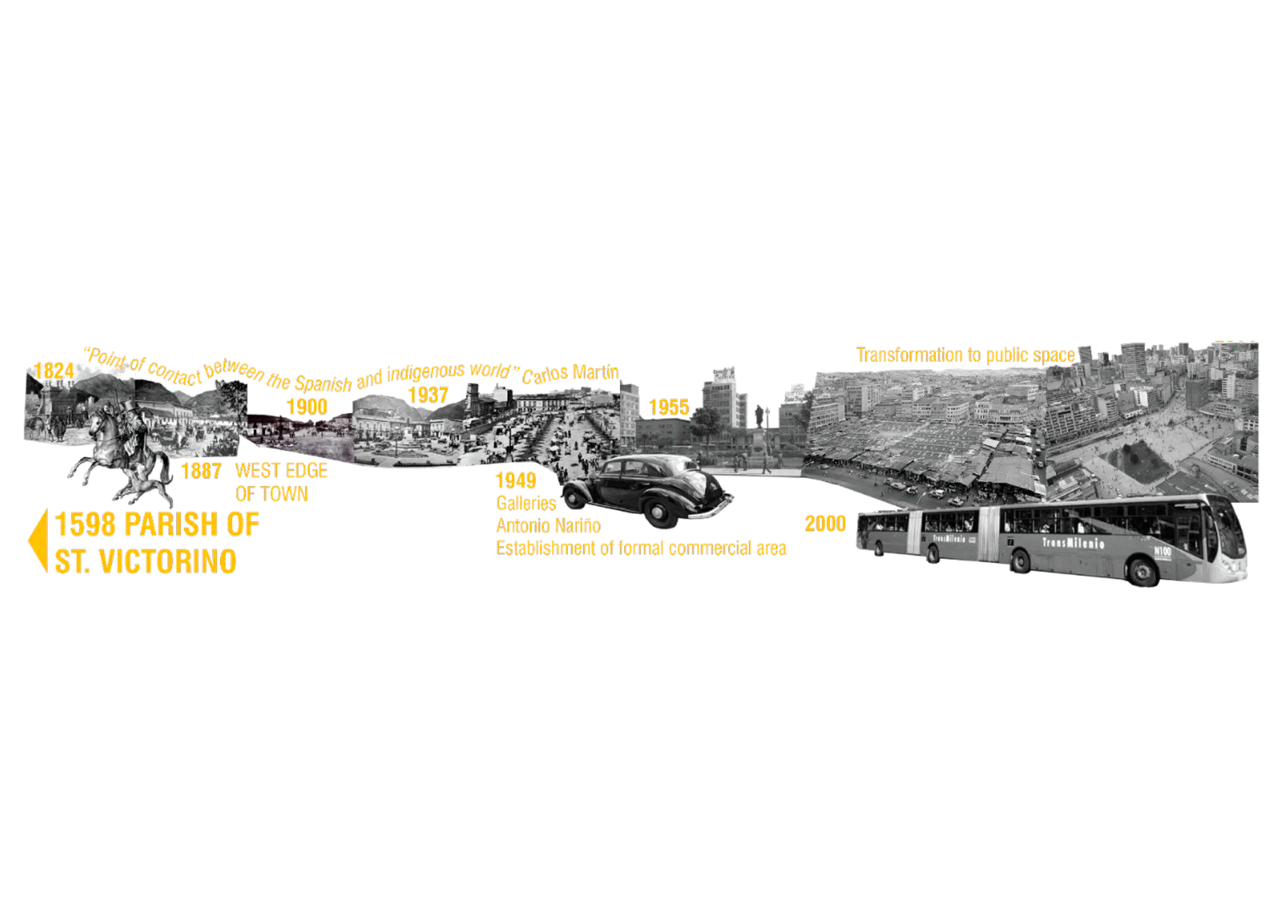
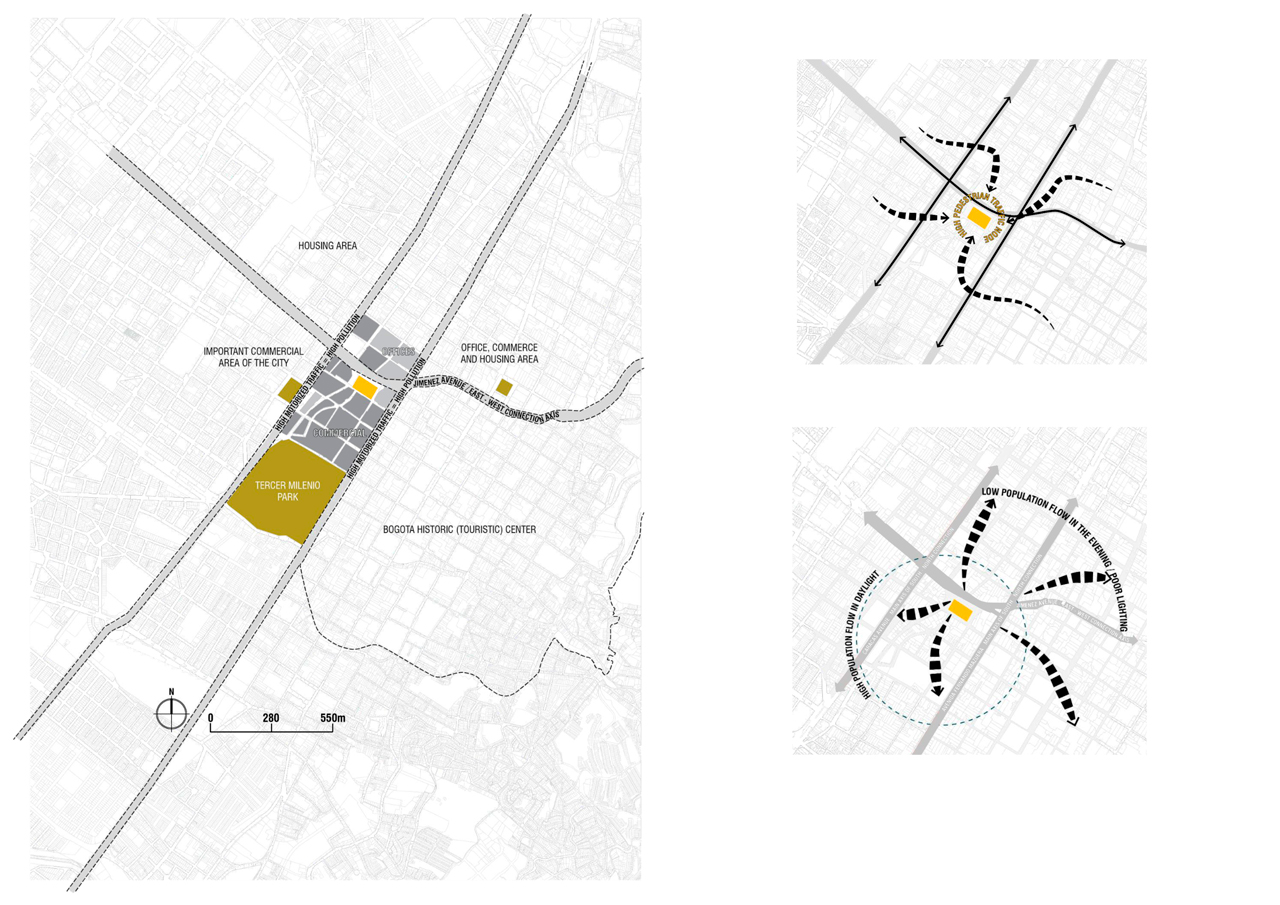
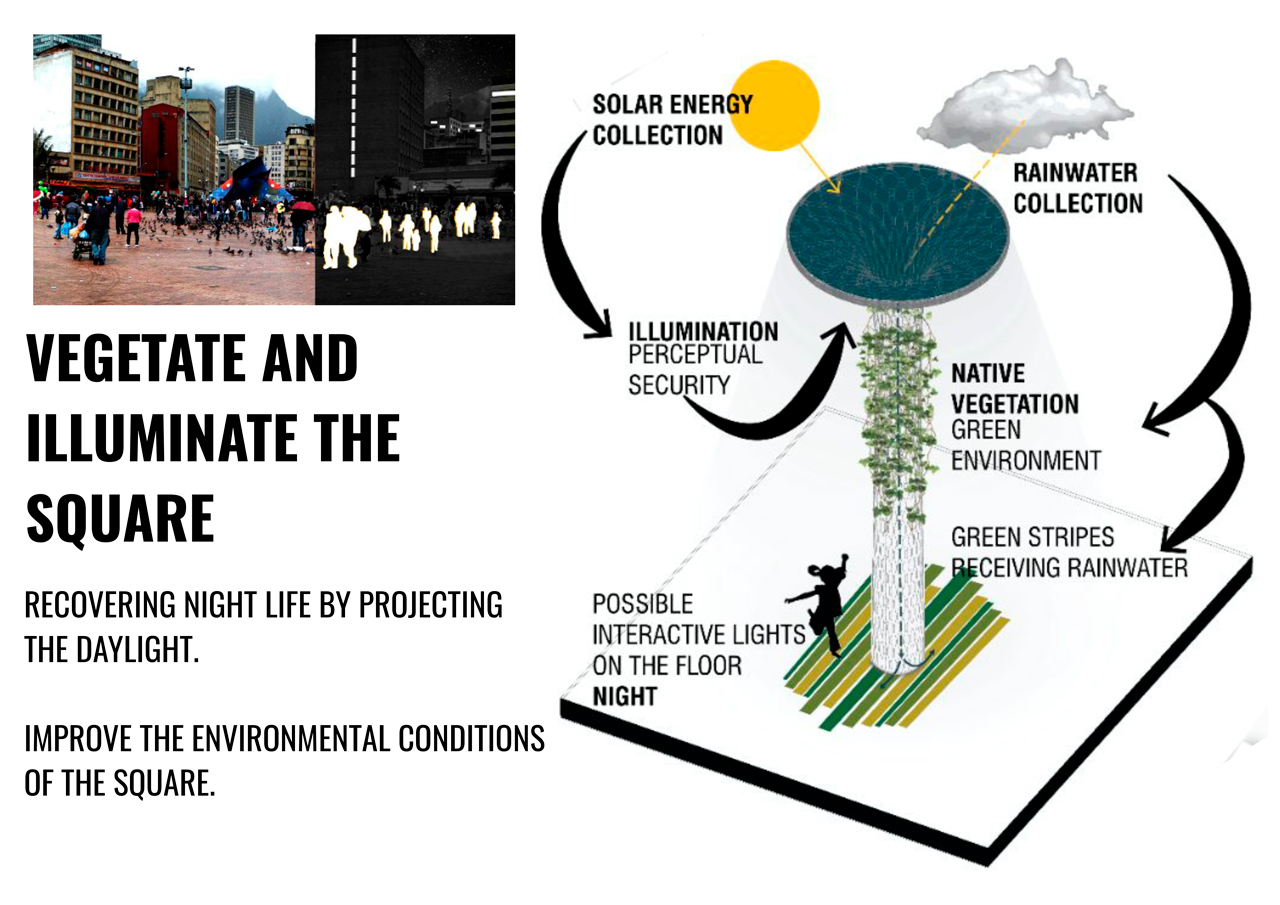
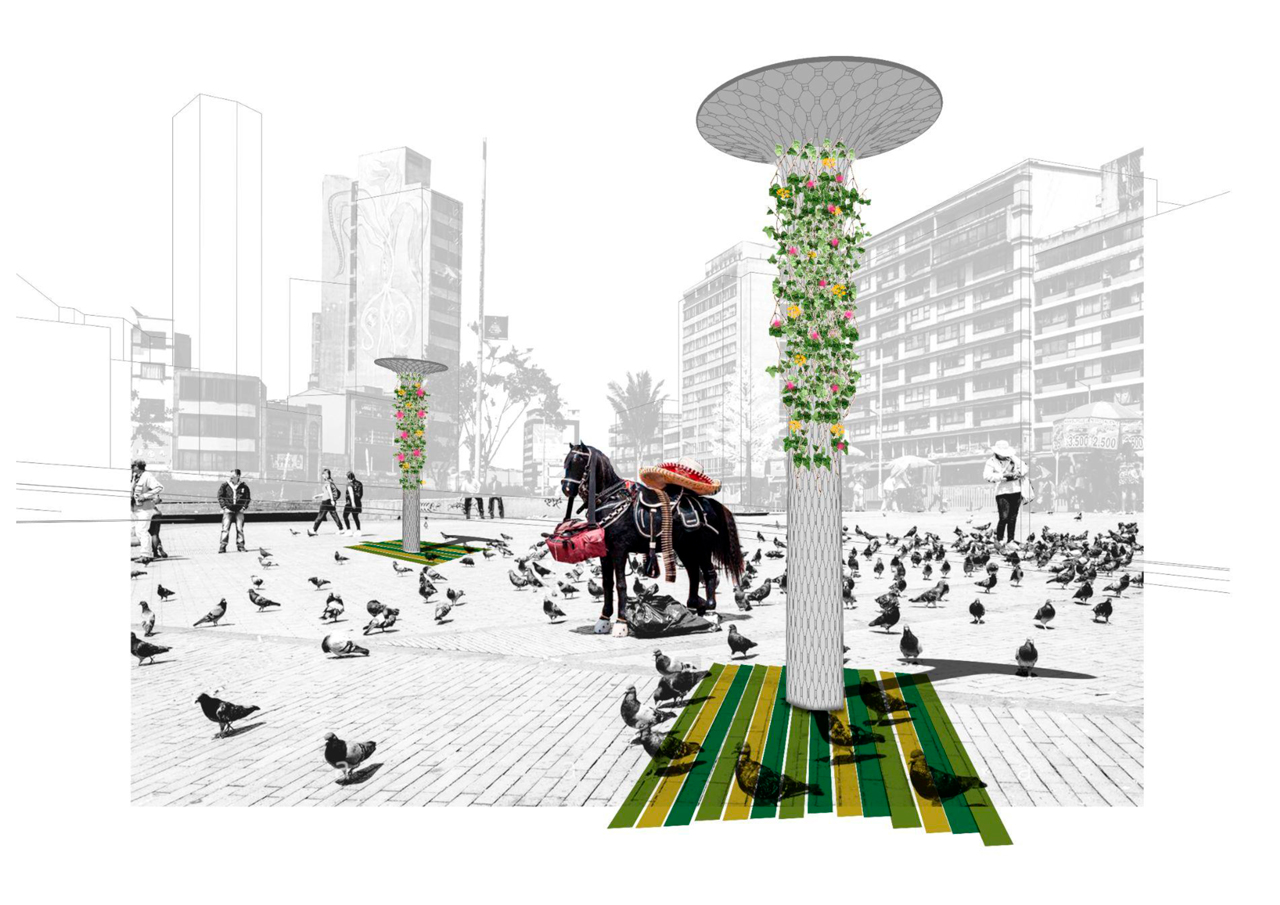
The Site and the Neighbourhood
Bogotá, in former times known as Santafé de Bogotá, is the capital of Colombia. The city is located on the central plain of the Andes Mountains belonging to the Colombian territory, whose average height is 2,625 metres above sea level. The settlement develops on different mountain systems, mainly its Eastern limit, known as the Eastern Hills, on which the gradient of the urban environment to the West was born, but with a notorious expansion from North to South, parallel to the hills, a situation that the makes them visible from almost the entire city. Indeed, these hills have an altitude that ranges from 2,575 to 3,650 metres above sea level.
The city’s climate is mainly cold, with an average of 14ºC, but it oscillates between 5ºC and 19ºC, reaching maximum temperatures of 25ºC and even temperatures below 0ºC in peripheral areas. It has two periods of rain, one in March, April and May and another in September, October and November, which become torrential rains and/or hailstorms. Then, there are several hydrographic slopes that cross the city and flow into the Bogotá river located on the Western periphery of the city.
The Plaza de San Victorino was born as one of the main parishes of the city of Bogota in the colonial era and is consolidated as an environment with high levels of dynamics of social encounter in the periphery of the moment. With the urban development of the city, the buildings adjoining the square develop a character of housing with commerce, which over the years displaces residential use, thus consolidating an epicentre of commerce and services. This situation causes a continuous deterioration of the landscape and consequently generates an environment of insecurity, violence and marginality. “Solved” with projects that prioritise asphalt and non-permeable areas that paint a grey, dirty and unhealthy landscape, where constancy is evident in every street.
Currently, the sector is a formal and informal economic centre for the city, with different flows of the population that spend their day to day in this low-quality urban sector, where the non-existence of an interactive or welcoming public space makes the place little appreciated and cared for by citizens. Moreover, it is identified as an area of high crime and insecurity that requires high impact projects to improve the social problems that are presented here.
The Design Proposal
The proposal conceived for the Plaza de San Victorino is the inclusion of lighting and vegetation, given the actual low presence of these elements, to generate greater interaction with the passer-by, mainly at night. The square has a large hard area deserted during the day except for transitory passage, while at night, it is totally dark and unsafe. It does not have any type of urban furniture that increase its quality and encourages citizen appropriation. For this reason, green lighting “umbrellas” are proposed, incorporating native vegetation watered by the rainwater collected in the upper part, while in turn, they capture solar energy to provide illumination at night. They also create a dynamism between the passer-by and the post. The devices are proposed as elements of urban furniture easy to install on what the square currently constitutes, without any additional modification, beyond possible green strips at the base of the “umbrella” functioning as rainwater dampers in case of saturation. They also add a touch of landscape and vegetation to the square. They modify the environment in which they are installed without generating major modifications that imply high economic costs. Finally, there is an interaction between the different “umbrellas” and the passer-by through changes of lights at night.
The Jury
“Good choice of an ‘under-considered,’ neglected area. The proposal gives back to ecosystems of plants spaces that capitalism rendered sort of uninhabitable for humans (i.e. stony commercial district), turning the city into a more hospitable space for different species. (…) The basic elements – plants that create a more welcoming atmosphere and better climate and light from energy collected during sunshine – are very efficient choices to enhance the quality of a place, bypassing strictly curated and labour-intensive programming.”
